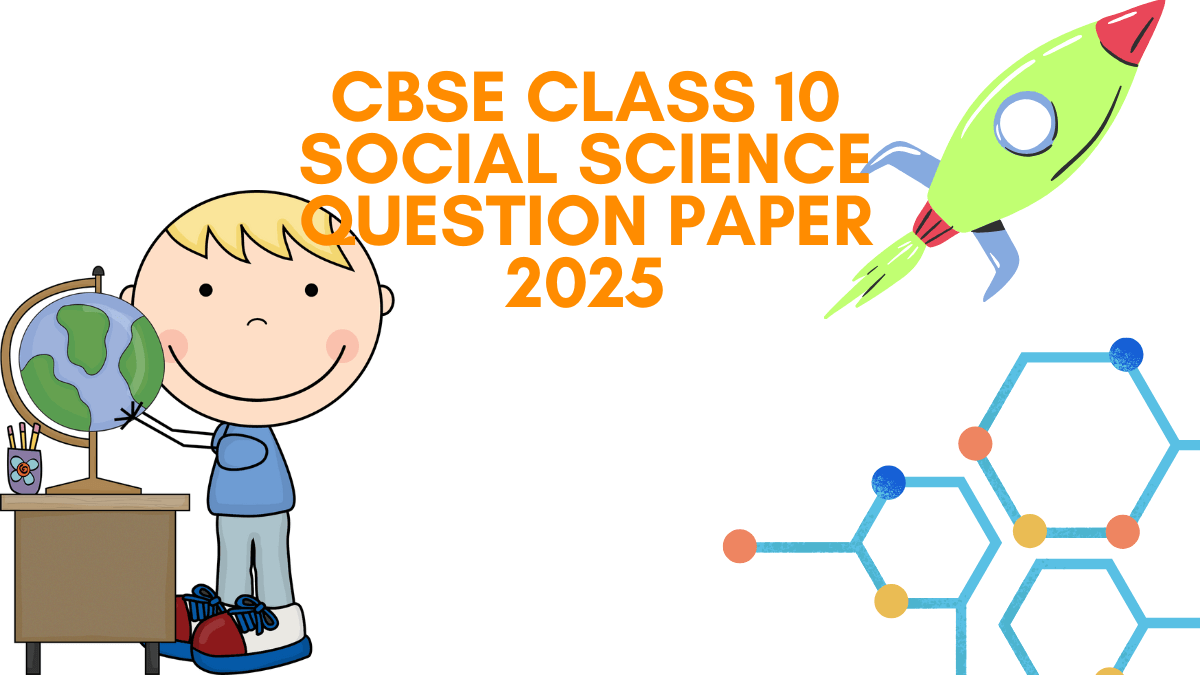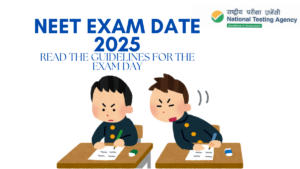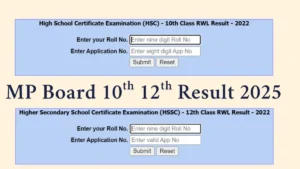Table of Contents
CBSE Class 10th Social Science Answer Key 2025 : The Central Board of Secondary Education (CBSE) successfully administered the CBSE Class 10 Social Science Exam 2025. Students who take the SST Board Exam 2025 can now access the CBSE Class 10 Social Science Answer Key 2025 on this page. We have published a comprehensive analysis of CBSE Class 10 SST Question Paper 2025 based on student feedback and subject experts. Scroll down this page to download the CBSE Class 10 Social Science Answer Key 2025 with Question Paper Free PDF for SET 1 2 3.
CBSE Class 10 Social Science Answer Key 2025
The CBSE Class 10 Social Science examination is a crucial paper in a student’s Board Exam as covers 100 marks of the total marks. It is slated for February 25, and the board paper will cover key disciplines such as history, geography, political science, and economics. To help students, we have shared the complete CBSE 10th Social Science Answer Sheet 2025 for all sets prepared by the subject matter experts. Using the CBSE Class 10 SST answer key 2025, students can estimate their projected scores and identify their weak areas.
CBSE Class 10th Social Science Question Paper 2025
The CBSE Class 10 SST Board Exam is conducted in pen and paper format and we have shared the Answer key of SST Board Exam 2025 for all sets on this page. As per the student’s initial reaction, the CBSE Class 10 SST Question Papers, paper was easy to moderate in difficulty level. Using the thorough analysis of the CBSE Class 10 Social Science Question Paper 2025, you will get a complete overview of the type of questions asked in today’s exam over multiple sets.
CBSE Class 10th SST Board Question Paper 2025 PDF Download for Free
Download the CBSE 10th Social Science Question Paper 2025 after the exam ends from the table. The CBSE Class 10 Social Science Practice Questions, Sample Papers, and other resources are also provided below.
| CBSE Class 10 Social Science Board Question Paper 2025 with Answer Key PDF Download (Free) | ||
| Set No | Question PDF | Answer Key PDF |
| Class 10th Social Science Question Paper 2025 Set 1 | Download PDF | Click Here |
| CBSE Class 10 Social Science Question Paper 2025 Set 2 | Download PDF | Click Here |
| CBSE Class 10 SST Question Paper 2025 Set 3 | Download PDF | Click Here |
Class 10th Social Science Answer Key 2025 for All Sets
Here review of all the CBSE 10th Social Science Answer Key 2025 for All Set 1 2 3 below
CBSE Class 10 SST Answer Key 2025 Set 1 ( 32/3/1)
Q1. Which one of the following languages is included in the Eighth Schedule of the Indian Constitution?
(a) Bhojpuri
(b) Magadhi
(c) Rajasthani
(d) Tamil
Ans. (d) Tamil
Q2. In which one of the following organs of India are women taking advantage of reservation?
(a) Municipality
(b) Legislative Council
(c) Rajya Sabha
(d) Judiciary
Ans. (a) Municipality
Q3. Choose the correctly matched pair from the following:
(a) Concurrent List – Education
(b) Concurrent List – Defence
(c) Concurrent List – Police
(d) Concurrent List – Trade
Ans. (a) Concurrent List – Education anan
Q4. Which of the following statements represent gender equality?
(a) The value of women’s vote is more than that of men.
(b) Restricting women to household chores.
(c) Providing more rights to men.
(d) Providing voting rights equally to men and women.
Ans. (d) Providing voting rights equally to men and women.
Q5. To reform the party system, which of the following tasks have been made compulsory for the political parties? Choose the most appropriate option.
It is now compulsory for all the political parties to file income tax returns.
II. It is now compulsory for all parties to have one-third women candidates.
III. It is now compulsory for all the political parties to hold their organisational election.
IV. It is now compulsory for all candidates to disclose information about pending criminal cases against them through affidavit.
Options:
(a) Only I, II and III are correct.
(b) Only I, II and IV are correct.
(c) Only I, III and IV are correct.
(d) Only II, III and IV are correct.
Ans. (c) Only I, III and IV are correct.
Q6. Which of the following group is in majority in Sri Lanka?
(a) Tamil-speakers
(b) Sinhala-speakers
(c) Telugu-speakers
(d) English-speakers
Ans. (b) Sinhala-speakers
Q7. Two statements are given below. They are Assertion (A) and Reason (R).
Read both the statements and choose the correct option:
Assertion (A): Every party in India has to register with the Election Commission.
Reason (R): The Government provides election symbols to all political parties in India.
Options:
(a) Both (A) and (R) are true and (R) is the correct explanation of (A).
(b) Both (A) and (R) are true, but (R) is not the correct explanation of (A).
(c) (A) is true, but (R) is false.
(d) (A) is false, but (R) is true.
Ans. (c) (A) is true, but (R) is false.
Q8. Data related to an imaginary country is given below. Study these data and answer the question that follows:
| Age | Total Population | Net Attendance |
| 7 and 8 years of age | 1200 | 1000 |
| 14 and 15 years of age | 1000 | 800 |
| Total | 2200 | 1800 |
The attendance percentage of this country of the age group of 14 and 15 years is _________
(a) 90 percent
(b) 80 percent
(c) 70 percent
(d) 60 percent
Ans. (b) 80 percent
Q9. Identify the sector on the basis of the following characteristics and choose the correct option:
- The objective of this sector is to earn profit.
- This sector is owned by a person or company.
- Tata Iron and Steel is an example of this sector.
Options:
(a) Cooperative Sector
(b) Unorganised Sector
(c) Public Sector
(d) Private Sector
Ans. (d) Private Sector
Q10. Why is it not easy to get loans from the formal sector? Read the following reasons and choose the most appropriate option:
I. Availability of Banks
II. Availability of Collateral
III. Long and Complicated Loan Process
IV. Awareness of Borrower
Options:
(a) Only I, II, and III are correct.
(b) Only II, III, and IV are correct.
(c) Only I, II, and IV are correct.
(d) Only I, III, and IV are correct.
Ans. (b) Only II, III, and IV are correct.
Q11. By which organization is the Human Development Report published?
(a) World Trade Organisation
(b) Amnesty International
(c) United Nations Development Programme
(d) World Health Organisation
Ans. (c) United Nations Development Programme
Q12. Identify the odd one out.
(a) Hindustan Computers Limited
(b) Bharti Airtel Limited
(c) Hindustan Unilever Limited
(d) Bharat Heavy Electricals Limited
S12. Ans. (d) Bharat Heavy Electricals Limited
Q13. Choose the correct option to fill in the blank:
The process of removing barriers on foreign trade and investment by the government is known as _________.
Options:
(a) Import Tax
(b) Export Tax
(c) Liberalisation
(d) Industrialisation
Ans. (c) Liberalisation
Q14. Two statements are given below. They are Assertion (A) and Reason (R).
Read both the statements and choose the correct option:
Assertion (A): Most of the jute industry in India is located in a narrow belt along the banks of Hugli river.
Reason (R): India is the second largest exporter of jute.
Options:
(a) Both (A) and (R) are true and (R) is the correct explanation of (A).
(b) Both (A) and (R) are true, but (R) is not the correct explanation of (A).
(c) (A) is true, but (R) is false.
(d) (A) is false, but (R) is true.
Ans. (b) Both (A) and (R) are true, but (R) is not the correct explanation of (A).
CBSE Class 10 SST Answer Key 2025 Set 2 Code 32/3/2
1. By which organization is the Human Development Report published?
(A) World Trade Organization
(B) Amnesty International
(C) United Nations Development Programme
(D) World Health Organization
(C) United Nations
Answer: Development Programme
2. Identify the odd one out.
(A) Hindustan Computers Limited
(B) Bharti Airtel Limited
(C) Hindustan Unilever Limited
(D) Bharat Heavy Electricals Limited
Answer: (B) Bharti Airtel Limited
3. The process of removing barriers on foreign trade and investment by the government is known as _____.
(A) import tax
(B) export tax
(C) liberalisation
(D) industrialisation
Answer: (C) Liberalisation
4. Two statements are given below. They are Assertion [A] and Reason [R]. Read both the statements and choose the correct option:
Assertion [A]: Most of the jute industry in India is located in a narrow belt along the banks of Hooghly River.
Reason [R]: India is the second largest exporter of jute.
Options:
(A) Both A and R are true and R is the correct explanation of A.
(B) Both A and R are true but R is not the correct explanation of A.
(C) A is true but R is false.
(D) A is false but R is true.
Answer: B) Both A and R are true but R is not the correct explanation of A.
5. Match Column I with Column II and choose the correct option:
| Column I | Column II |
| A. Sariska Wildlife Sanctuary B. Manas Tiger Reserve C. Periyar Tiger Reserve D. Corbett National Park |
I. Uttarakhand II. Rajasthan III. Assam IV. Kerala |
(A) a-i, b-ii, c-iii, d-iv
(B) a-ii, b-iii, c-iv, d-i
(B) a-ii, b-iii, civ, d-i
(C) a-iv, b-i, c-iii, d-ii
(D) a-ii, b-i, c-iv, d-iii
6. Mrs Monica, along with her family, clears a piece of land and grows grain and other food crops to feed her family. When the soil’s fertility decreases, she prepares another piece of land for agriculture. Which of the following methods of agriculture does she use?
(A) Plantation farming
(B) Slash and burn farming
(C) Intensive subsistence farming
(D) Commercial farming
Answer: (B) Slash and burn farming
7. The germs of which disease paved the way for Europe’s conquest of America in the latter half of the sixteenth century?
(A) Cholera
(B) Smallpox
(C) Jaundice
(D) Malaria
Answer: (B) Smallpox
8. In reference to the Germania allegory, the “olive branch around the sword” symbolises which of the following?
(A) Being afraid
(B) Heroism and strength
(C) Willingness to make peace
(D) Beginning of a new era
Answer: (C) Willingness to make peace
9. Which among the following newspapers is related to Bal Gangadhar Tilak?
(A) Hindustan
(B) Bangla Patrika
(C) Veer Bhoomi
(D) Kesari
Answer: (D) Kesari
10. Arrange the following historical events in chronological order and choose the correct option:
I. Bardoli Satyagraha
II. Rawalpindi Satyagraha
III. Champaran Satyagraha
IV. Kheda Satyagraha
(A) I, II, III, IV
(B) II, III, IV, I
(C) III, IV, II, I
(D) III, IV, II, I
Answer: (C) III, IV, II, I
11. Why is it not easy to get loans from the formal sector? Read the following reasons and choose the most appropriate option:
I. Availability of banks
II. Availability of collateral
III. Long and complicated loan process
IV. Awareness of borrower
(A) Only I, II, and III are correct
(B) Only II, III, and IV are correct
(C) Only I, II, and IV are correct
(D) Only I, III, and IV are correct
Answer: (B) Only II, III, and IV are
12. Identify the sector on the basis of the following characteristics and choose the correct option:
The objective of this sector is to earn profit.
This sector is owned by a person or company.
Tata Iron and Steel is an example of this sector.
A) Cooperative sector
B) Unorganised sector
C) Public sector
D) Private sector
Answer: (D) Private sector
CBSE Class 10 SST Answer Key 2025 Set 3 (32/3/3)
1. Arrange the following historical events in chronological order and choose the correct option:
I. Bardoli Satyagraha
II. Rowlatt Satyagraha
III. Champaran Satyagraha
IV. Kheda Satyagraha
Options:
(A) I, II, III, IV
(B) III, II, I, IVF
(C) II, I, IV, III
(D) III, IV, II,I (Answer)
2. Which among the following newspapers is related to Bal Gangadhar Tilak? 1
(A) Hindustan
(B) Bangla Patrika
(C) Veer Bhoomi
(D) Kesari (Answer)
3. In reference to the Germania allegory the “olive branch around the sword” symbolizes which one of the following? vi biondis()
(A) Being freed
(B) Heroism and strength
(C) Willingness to make peace (Answer)
(D) Beginning of a new era
4. The germs of which disease paved the way for Europe’s conquest of America in the later half of the sixteenth century?
(A) Cholera
(B) Smallpox (Answer)
(C) Jaundice
(D) Malaria
5. Mrs. Monica, along with her family, clears a piece of land and grows grain and other food crops to feed her family. When the soil’s fertility 8 decreases, she prepares another piece of land for agriculture. Which of the following methods of agriculture does she use?
(A) Plantation farming
(B)Slash and burn farming (answer)
(C) Intensive subsistence farming
(D)Commercial farming
6. Match Column I with Column II and choose the correct option:
| Column I | Column II |
| a. Sariska Wildlife Sanctuaryi. b. Manas Tiger Reserve C. Periyar Tiger Reserve d. Corbett National Park |
i. Rajasthan
Uttarakhand iji. Assam iv. Kerala |
Options:
(A) a-i, b-ii, c-iii, d-iv
(B) a-ii, b-iii, c-iv, d-i answer)
(C) a-iv, b-i, c-iii, d-ii
(D) a-ii, b-i, c-iv, d-iii
7. Two statements are given below. They are Assertion (A) and Reason (R).
Read both the statements and choose the correct option:
Assertion (A): Most of the jute industry in India is located in a narrow belt along the banks of Hugli river.
Reason (R) : India is the second largest exporter of jute.
Options:
(A) Both (A) and (R) are true and (R) is the correct explanation of (A).
(B) Both (A) and (R) are true, but (R) is not the correct explanation of (A). (answer)
(C) (A) is true, but (R) is false.
(D) (A) is false, but (R) is true
CBSE Class 10th Social Science Question Paper Analysis 2025
As the class 10th Social Science exam is over. we have shared the complete exam analysis of the students as well as the subject experts here. The analysis gives a solid overview to students about the difficulty level of the exam and the expected number of marks that can be achieved by the majority of students. The CBSE Class 10 Social Science exam analysis 2025 will also give an idea to students about the questions that can be expected in the upcoming exams.
Students Reaction on CBSE Class 10 SST Question Paper 2025
According to the first feedback, the CBSE Class 10 Social Science Paper 2025 was easy to moderately difficult. The paper included a balanced mix of theory, map-based, and case-study questions.
- Many found the paper easy, especially those who reviewed NCERT textbooks and practiced previous years’ question papers.
- The map-based questions were straightforward and directly from the syllabus.
- Case-based and assertion-reasoning questions necessitated logical reasoning and a thorough comprehension of ideas.
- Some students struggled with time management, particularly in long-answer questions with thorough explanations.
Teacher’s Review on CBSE Class 10th SST Question Paper 2025
- As per the subject experts, The CBSE Class 10th SST question paper 2025 was well-balanced and covered all important themes, with no unexpected or out-of-syllabus questions.
- Clear conceptual understanding was crucial for properly responding to case-based and assertion-based questions.
- Teachers feel that kids who study from NCERT and practise sample papers would perform well.
- The paper assessed both academic knowledge and analytical skills, ensuring a fair and well-structured exam.
- Students that focus on understanding concepts rather than memorization are predicted to do well in the CBSE.
CBSE 10th SST Question Paper 2025 Pattern
If students are taking the SST paper tomorrow you must understand its pattern, and use smart strategies to score well in the exam. The social science paper pattern follows –
- Time Allowed: 3 hours.
- Maximum marks: 80.
- The question paper has six sections: A, B, C, D, E, and F. There are 37 questions on the Question paper. All questions are mandatory.
- Section A – Questions 1–20 are MCQs worth 1 mark each.
- Section B – Questions 21-24 are very short answer kind and carry 2 marks each. Each question’s answer should be no more than 40 words.
- Section C contains Short Answer Type Questions (Q.25-Q.29) worth three points each.
Answers to each question should not be more than 60 words. - Section D – Questions 30–33 are extended answer type questions with 5 marks each.
- Each question’s answer should be no more than 120 words.
- Section-E – Questions 34-36 are case-based, with three sub-questions of 4 marks each. Each question’s answer should be no more than 100 words.
- Section F – Question no. 37 is map-based and worth 5 marks. It consists of two parts: 37a from History (2 marks) and 37b from Geography (3 marks).
- There is no overall choice on the question paper. Some questions include an internal choice. Only one of the possibilities in such queries must be attempted.
- Separate instructions are provided for each part and questions as needed.
Class 10 SST Board Paper 2025 Most Repeated Questions
This section provides CBSE 10th Social Science Questions 2025 for History, Geography, Economics, and Political science.
Social Science Class 10 History Questions 2025
Q 1. What was the result of the peace negotiation in Geneva that followed the French defeat in Vietnam? (2016 D)
Answer:
In the peace negotiation in Geneva that followed the French defeat, the Vietnamese were persuaded to accept the division of the country. North and South were split. Ho Chi Minh and the communists took power in North. Bao Dai’s regime was put in power in South.
Q. Who led the ‘Scholar Revolt’ in Vietnam in 1868? (2016 0D)
Answer:
The “Scholar Revolt” in Vietnam in 1868 was led by officials at the imperial court.
Q. Describe infrastructural projects which were developed by the French colonisers in Vietnam. (2012 D, 2012 OD)
Answer:
Infrastructural projects which were developed by the French colonisers in Vietnam:
The French built canals and drained lands in the Mekong Delta to increase cultivation. The irrigation canals helped to increase rice production and allowed the export of rice to the international market.
Transport networks were laid to help transport goods for trade and move military garrisons.
Information projects started in order to transport goods. The French constructed trans-Indo-China rail network to connect the northern and the southern parts of Vietnam and Yunan in China. The second line was built linking Vietnam to Siam via the Cambodian Capital of Phnom Penh.
Q. Explain the reactions within the United States to its involvement in the Vietnam War during the 1960s. (2011 D)
Answer:
The effect of United States being involved in the Vietnam War of 1960s was also felt within United States:
Many became critical of the government for getting involved in an indefensible war.
Anger spread out amongst the youth because of the government’s discriminatory practise. Compulsory service in armed forces was only forced on the minorities and children of working class families and not on the privileged elites.
US media and films played a major role in both, supporting and motivating the youth to participate in war, as well as criticizing the war as unreasonable.
SST Questions of Political Science 2025
Q. Name the two athletes who protested at the Mexico Olympics in 1968.
Answer:
Tommie Smith, John Carlos.
Q. What did the African-American athletes do in order to draw international attention to ‘black poverty’ in the Mexico Olympic? (2012)
Answer:
At the Mexico Olympics in 1968, two African-American athletes Tommie Smith and John Carlos protested to draw international attention towards ‘black poverty’.
They had won the bronze and gold medals respectively. They received their medals wearing black socks and no shoes to represent black poverty.
They stood on the victory board with clenched fists upraised and bowed heads as a symbol of ‘black power’. Their motive was to draw international attention to racial discrimination in the United States
Q. Define the term ‘migrant’.
Answer:
Anybody who shifts from one region or country to another region within a country or to another country, usually for work or other opportunities, is called migrant.
Q. Explain the meaning of democracy. (2017 OD)
Answer:
Democracy can be broadly defined as a form of government where rulers are elected by the people. The representatives are elected through free and fair elections.
Social Science Class 10 Geography Questions 2025
Q. “Resources are a function of human activities.” Justify this statement.
Answer:
Mere presence of resources, as free gifts of nature, does not make them resources. Human beings are essential components of resources because they transform material available in our environment into resources. The utility of resources depends on the stage of cultural development of man and the tools and technology used by him
Q. Classify the resources on the basis of exhaustibility and give two examples of each.
Answer:
On the basis of exhaustibility, resources can be classified as: Renewable and Non-renewable.
Renewable Resources. The resources which can be renewed or reproduced by physical, chemical and mechanical processes are known as renewable or replenishable resources, e.g., water, wildlife, forests, solar energy, wind energy etc.
Non-renewable Resources. The resources which once get exhausted, cannot be remade. They take a long geological period of time, i.e., millions of years in their formation, e.g., minerals, fossil fuels etc.
Q. How are natural resources important for man? Give five points.
Answer:
Importance of resources for man:
Resources are vital for human survival.
They are important for maintaining the quality of life as man has been using the bio-physical environment to satisfy his needs.
Natural resources form the backbone of the economy of a nation.
These are the bases for economic strength and prosperity of the people.
They provide material, energy and favourable conditions for development.
Social Science Questions of Political Science 2025
Q. Classify the economy on the basis of the nature of the activity. (2015)
Answer:
The economy is classified on the basis of economic activities into three sectors namely Primary sector, Secondary sector and Tertiary sector.
Q. Name the sector in which the government owns most of the assets and provides all the services. (2013)
Answer:
Pubic Sector
Q. What is disguised unemployment? (2012)
Answer:
Disguised unemployment is a situation in which more people are employed on a job than the required number.
Q. Name the sector which continued to be the largest employer even in the year 2000. (2014)
Answer:
The primary sector continued to be the largest employer even in the year 2000.
Q. Production of a commodity, mostly through the natural process is an activity of which sector? (2013)
Answer:
Primary Sector
Q. ATM is an example of which sector? (2014)
Answer:
Tertiary sector
Q. How many days of guaranteed employment are provided under National Rural Employment Guarantee Act, 2005? (2014)
Answer:
100 days of employment are guaranteed under NREGA, 2005.
Related Post:-



 NEET Organic Chemistry Syllabus 2025, Ch...
NEET Organic Chemistry Syllabus 2025, Ch...
 NTA NEET Exam Date 2025 OUT, Exam Timing...
NTA NEET Exam Date 2025 OUT, Exam Timing...
 Class 10th result 2025 MP Board Announce...
Class 10th result 2025 MP Board Announce...

